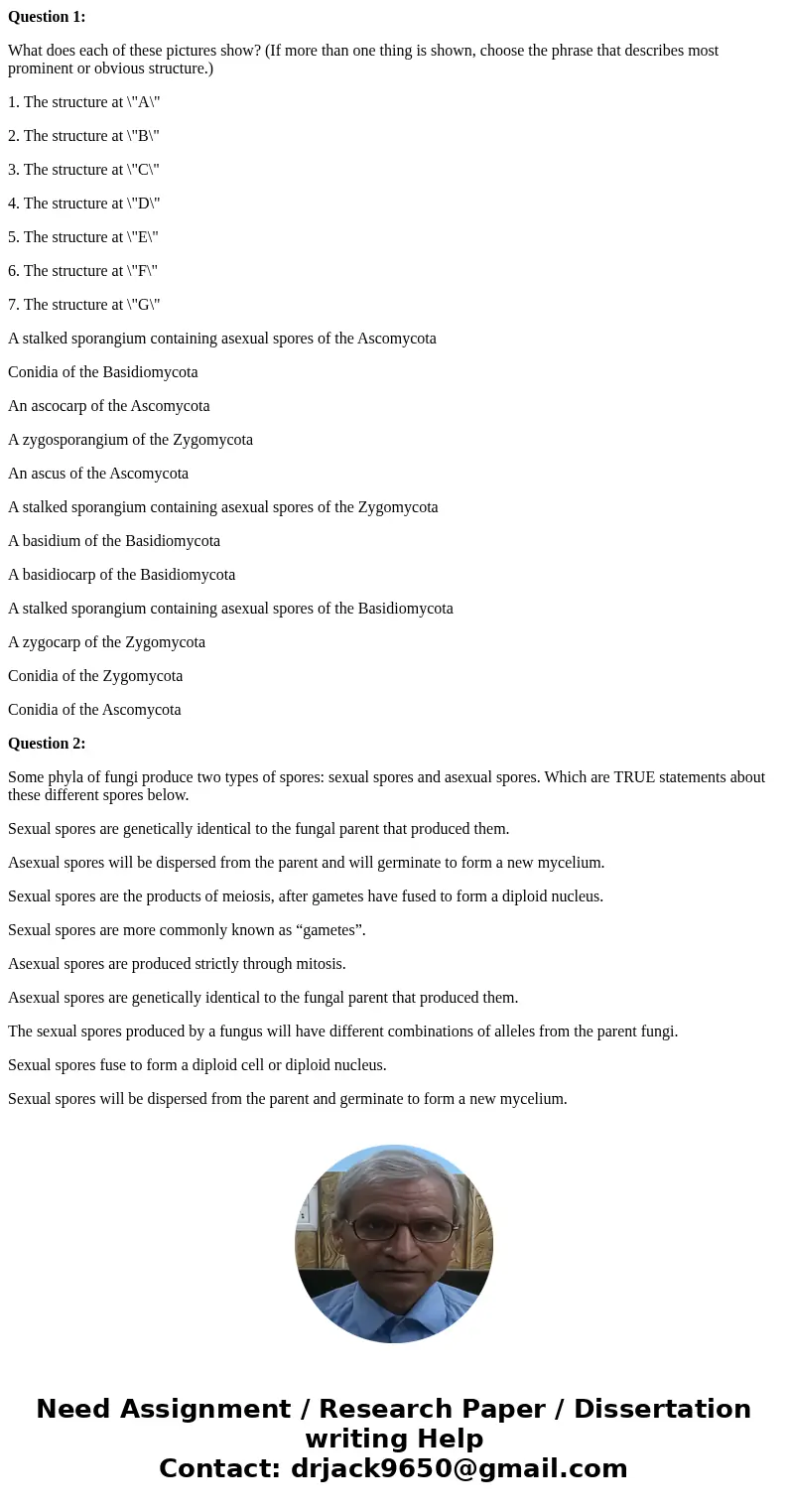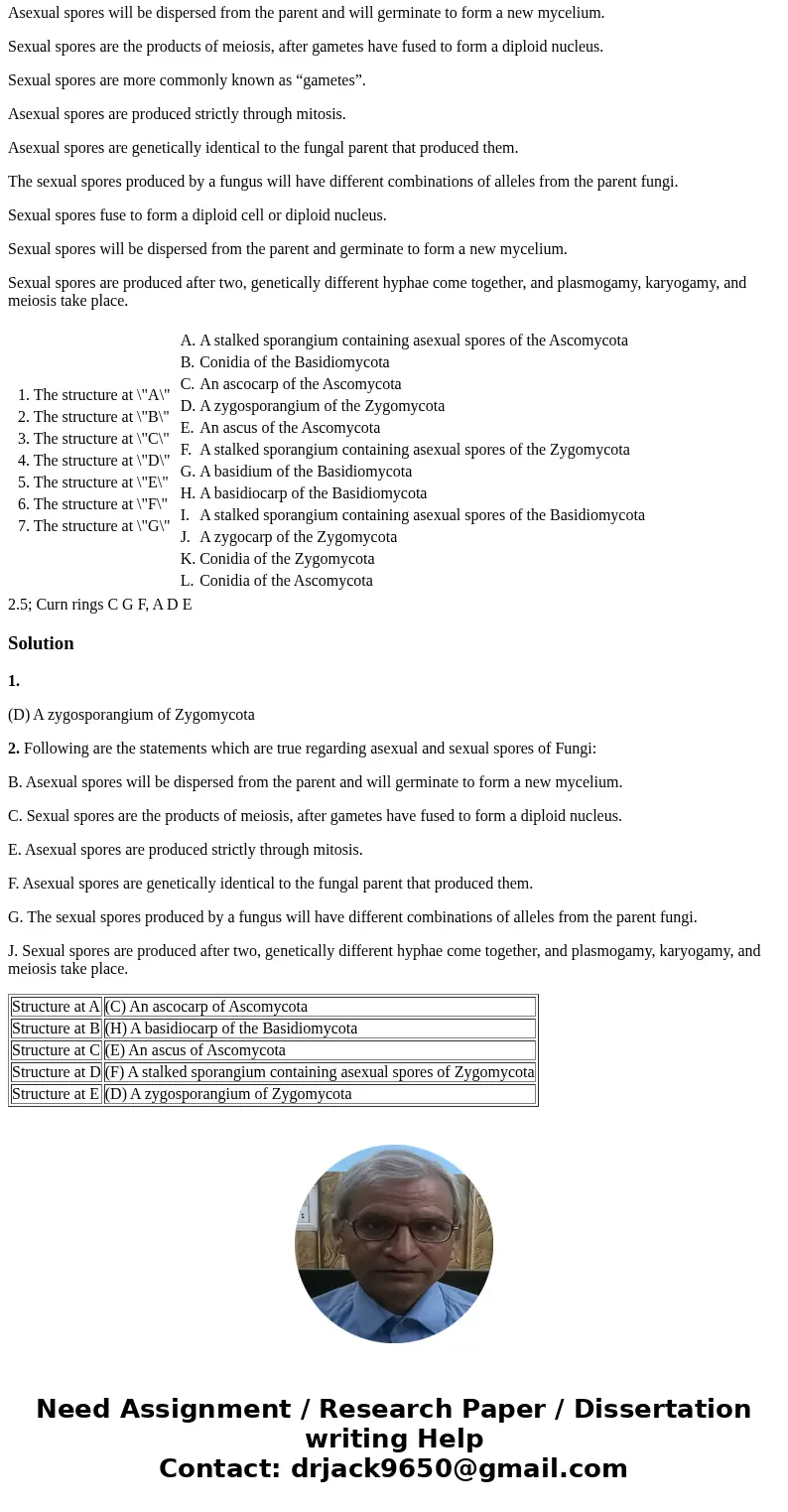Question 1 What does each of these pictures show If more tha
Question 1:
What does each of these pictures show? (If more than one thing is shown, choose the phrase that describes most prominent or obvious structure.)
1. The structure at \"A\"
2. The structure at \"B\"
3. The structure at \"C\"
4. The structure at \"D\"
5. The structure at \"E\"
6. The structure at \"F\"
7. The structure at \"G\"
A stalked sporangium containing asexual spores of the Ascomycota
Conidia of the Basidiomycota
An ascocarp of the Ascomycota
A zygosporangium of the Zygomycota
An ascus of the Ascomycota
A stalked sporangium containing asexual spores of the Zygomycota
A basidium of the Basidiomycota
A basidiocarp of the Basidiomycota
A stalked sporangium containing asexual spores of the Basidiomycota
A zygocarp of the Zygomycota
Conidia of the Zygomycota
Conidia of the Ascomycota
Question 2:
Some phyla of fungi produce two types of spores: sexual spores and asexual spores. Which are TRUE statements about these different spores below.
Sexual spores are genetically identical to the fungal parent that produced them.
Asexual spores will be dispersed from the parent and will germinate to form a new mycelium.
Sexual spores are the products of meiosis, after gametes have fused to form a diploid nucleus.
Sexual spores are more commonly known as “gametes”.
Asexual spores are produced strictly through mitosis.
Asexual spores are genetically identical to the fungal parent that produced them.
The sexual spores produced by a fungus will have different combinations of alleles from the parent fungi.
Sexual spores fuse to form a diploid cell or diploid nucleus.
Sexual spores will be dispersed from the parent and germinate to form a new mycelium.
Sexual spores are produced after two, genetically different hyphae come together, and plasmogamy, karyogamy, and meiosis take place.
|
|
Solution
1.
(D) A zygosporangium of Zygomycota
2. Following are the statements which are true regarding asexual and sexual spores of Fungi:
B. Asexual spores will be dispersed from the parent and will germinate to form a new mycelium.
C. Sexual spores are the products of meiosis, after gametes have fused to form a diploid nucleus.
E. Asexual spores are produced strictly through mitosis.
F. Asexual spores are genetically identical to the fungal parent that produced them.
G. The sexual spores produced by a fungus will have different combinations of alleles from the parent fungi.
J. Sexual spores are produced after two, genetically different hyphae come together, and plasmogamy, karyogamy, and meiosis take place.
| Structure at A | (C) An ascocarp of Ascomycota |
| Structure at B | (H) A basidiocarp of the Basidiomycota |
| Structure at C | (E) An ascus of Ascomycota |
| Structure at D | (F) A stalked sporangium containing asexual spores of Zygomycota |
| Structure at E | (D) A zygosporangium of Zygomycota |


 Homework Sourse
Homework Sourse